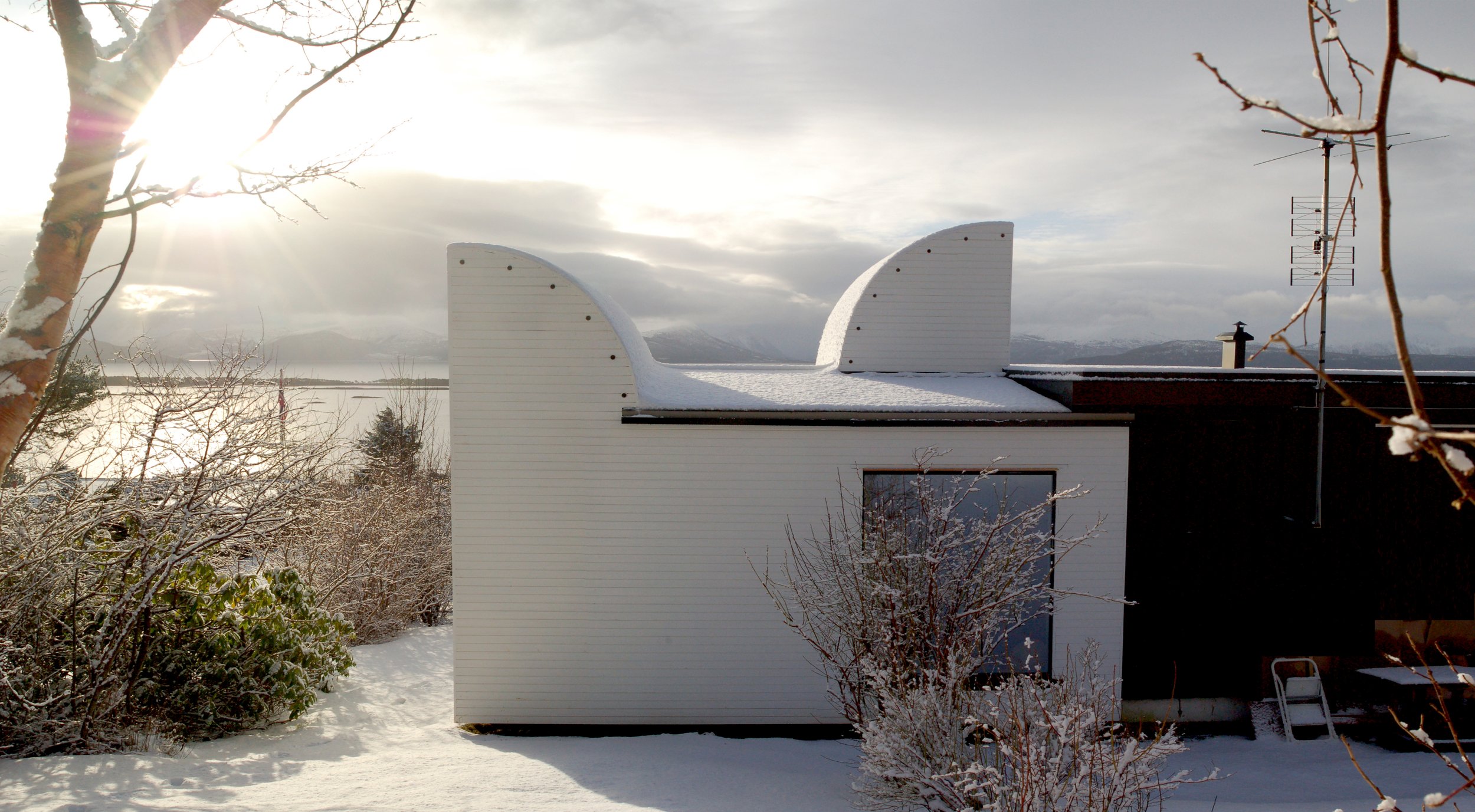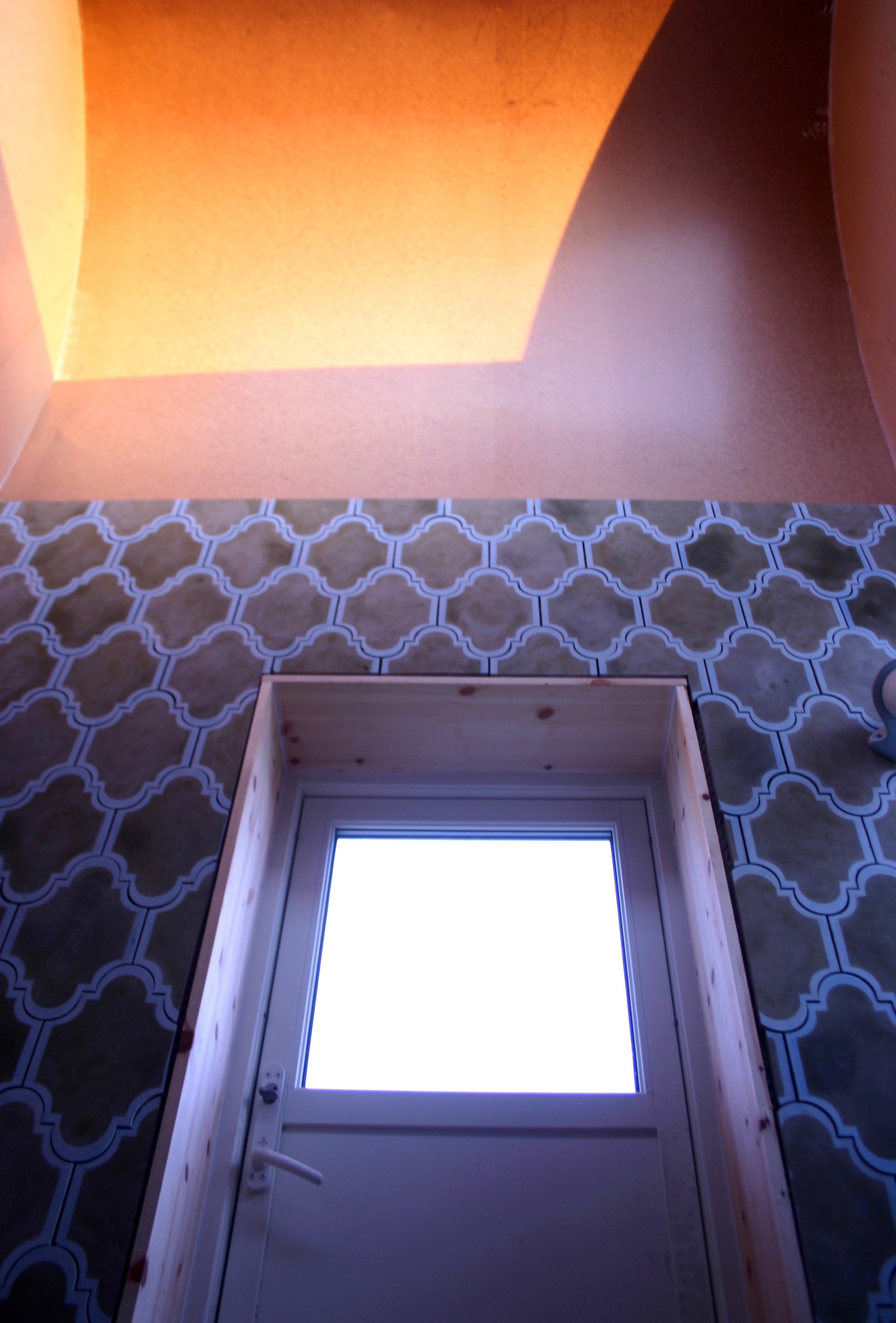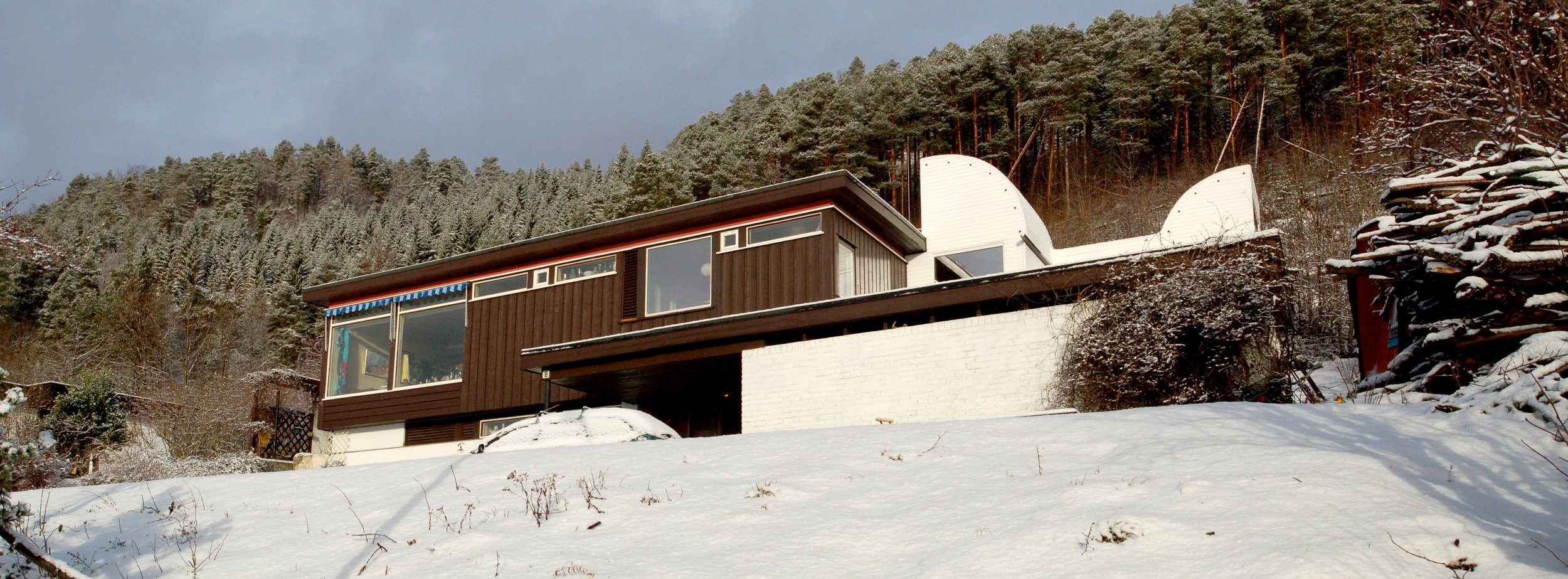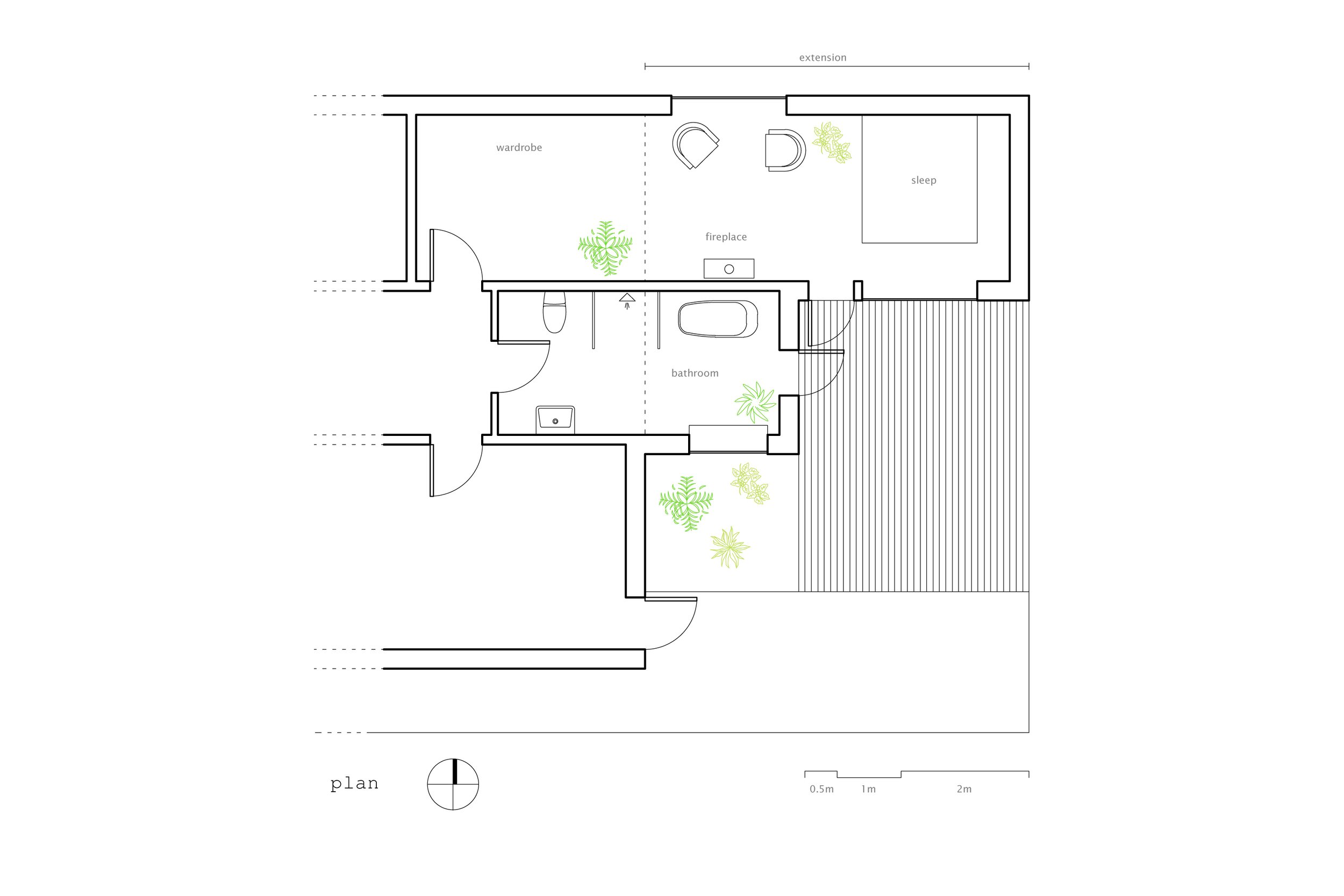—
Pedervegen
Addition to detached house
2012
The new owner of a detached house in Molde wanted an extension of an existing bath- and bedroom. The house was still in more or less its original 1962-condition and appeared as a time-typical house from this period. That is Scandinavian functionalism with a flat roof and brown exterior panels contrasted with white brick walls. Furthermore the house had an elegant and somewhat closed composition.















The owner wanted to get the evening sun in the bathroom (which was on the east side of the building) and to keep the morning sun in the expansion of the bedroom without being exposed to neighbours. Views of the spectacular mountain range to the south were required from both rooms.
We initially wanted to make a clear distinction between the extension and the original building. At the same time we did not want to create too much contrast in terms of materials and formal means. We chose to use wood cladding, as the existing building, while the colour of the new cladding was taken from the original bright brick walls. We also changed the orientation of the panels. In order to solve the requested light preferences we brought in a new form, the quarter circle, which we held for a type of basic shape that could easily relate to architecture of the early sixties.
The bathroom has a clear everyday zone in the innermost part with shower, toilet and sink, while the outer section provides the more time-spending bathroom artifacts; a bathtub, a wide window sill with a view and a door to the garden. The latter part has a skylight in the shape of a curve facing west. The room bathes in the late evening sun when the west-coast weather allows it. Tiles are sober in the inner part, whilst the outer part has a more festive consortium. The contrast between the inner and outer zones of the bathroom was in danger of being too hard. The relaxing ambiguity is that the outer zone suggests peace of mind in its use, yet at the same the form here is intense. While the inner zone, which reflects more efficiency, has a calmer expression in terms of colours and patterns.
The bedroom is long and has three different zones. First, a dressing-section with a large mirror and a backstage-like atmosphere. In the middle a lounge area with a fireplace and a generous window facing the green to the north. At the end of the bedroom is the bed with a large window and its view to the south. Over the bed a vaulted ceiling with a window heralding the morning sun as well as giving a view of the stars at night.
In retrospect, we were surprised at the modest exterior contrast between the extension and the original building. To a large extent we believe this is due to the fact that the selected wood panels have about the same size as the bonds in the original brick wall, so that these two surfaces relate. This is particularly evident in the north facade. Also, the quarter circles seem to work as form and at the same time they provide the building with a touch of relieving humour.
